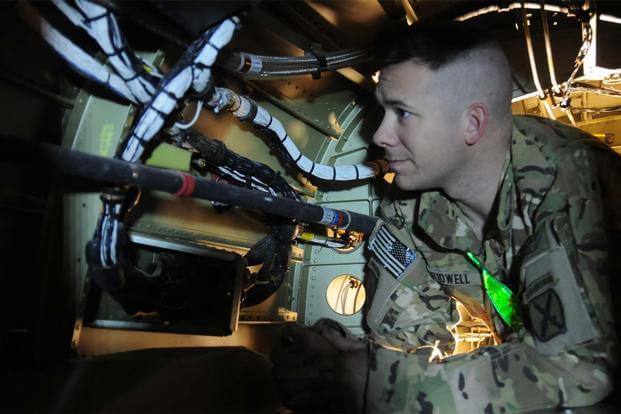Members of Congress expressed concern Wednesday that U.S. troop levels in Afghanistan can only be maintained by deploying incomplete units -- a practice that is eroding readiness, according to an Army general.
Since 2015, U.S. Army combat aviation brigades have been deploying to the country without their aircraft maintainers, House Armed Service Committee Chairman Mac Thornberry said at a subcommittee hearing to discuss aviation readiness.
"And so what do those maintainers do when they are left here in the states when their aircraft and their pilots are in Afghanistan?" Thornberry asked Lt. Gen. Kevin Mangum, deputy commanding general of U.S. Army Training and Doctrine Command.
"Sir, they are not doing a whole lot of aviation maintenance," Mangum said.
"And I think your point is, as I understand it, that does not help readiness when you have important maintainers without aircraft to work on," Thornberry said.
"No sir. We are building a deficit of experience and expertise in our formation as a result," Mangum said.
Instead of unit personnel, the U.S. military depends on civilian contractors to maintain the helicopters -- individuals that are not counted as part of the total number of U.S. troops in Afghanistan.
"Does that cost more or less than if the maintainers had been there with them?" Thornberry asked.
"It costs more to have contractors," Mangum said. "We are paying around $100 million dollars this year to have contractors in Afghanistan."
Thornberry's comments come as President Barack Obama once again altered his withdrawal plan for Afghanistan, announcing Wednesday that 8,400 U.S. troops would remain in the country next year rather than the 5,500 initially authorized.
Currently, there are about 9,800 U.S. troops authorized for Afghanistan. Obama had earlier agreed to change his plan to begin reducing that number to 5,500 by January 2017 by keeping the 9,800 in Afghanistan through the rest of this year, as recommended by his generals.
Leaving more American service members in the country will cost an extra $3.5 billion next year alone, a defense budget analyst estimated.
Thornberry, a Republican from Texas, said, "One of the ways the troop caps are reached is like this, and it costs more and yet where does that money come from? It comes out of the readiness of all these folks and what they are trying to do."
Rep. Austin Scott, a Republican from Georgia, agreed with the chairman's comments, adding that the practice of substituting civilian contractors for troops may reach a political target, but "has absolutely nothing to do with winning a war."
"Some political strategist somewhere determines that it is going to be popular to say ‘we have drawn down to a certain number of troops,' so we are sending the pilots and not the maintainers when in fact we are actually paying more for the equipment to be maintained by contractors," Scott said.
There are about three times as many contractors in Afghanistan as there are U.S. troops -- 28,626 to 9,640, according to a Central Commandfigures from April.
Almost half of those contractors are helping to provide logistics and maintenance to American personnel, the document states. The rest are working in security, base support, management and administration, construction, translation and interpretation, among other areas.
-- Richard Sisk and Brendan McGarry contributed to this story.
-- Matthew Cox can be reached at matthew.cox@military.com.




























